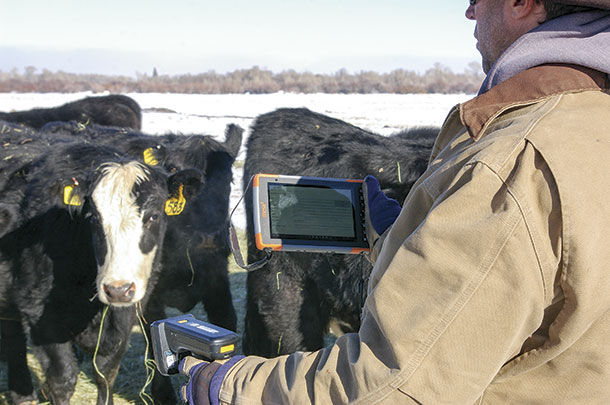Cattle Industry to Weigh In on RFID in Washington State
The Washington State Department of Agriculture (WSDA) is proposing updates to its rules for livestock identification that would require cattle to be individually identified with official U.S. Department of Agriculture (USDA) radio frequency identification tags. The tags would be applied when female cattle receive brucellosis vaccination or when bulls are sampled for trichomoniasis.
The proposal will next enter a period of public comment before WSDA decides whether or not to adopt the proposed regulations. If the rule is adopted, all cattle above the age of 18 months would need to be tagged with low-frequency (LF) RFID-enabled tags, and each tag’s unique ID number would need to be linked to a particular cow’s or bull’s health and movement record in WSDA’s database.
he requirement would dictate that female cows be tagged at the time that they receive their brucellosis vaccinations (in order to prevent the highly infectious bacterial infection) and bulls when they are sampled for trichomoniasis (a venereal disease). The tags could then be interrogated at auctions or by veterinarians throughout the animals’ life.
The state already requires official identification in the form of a metal tag to ensure that cattle owners meet its Animal Disease Traceability (ADT) policy, explains Jodi Jones, WSDA’s Animal Services Division operation manager. The ADT program is intended to meet USDA expectations for all U.S. states to progress in identification-collection systems, in order to prevent or manage illnesses among livestock. Currently, the USDA requires, at minimum, the use of a visual ear tag adherent to a specific identification standard.
“The whole goal is collecting and tracking an animal’s movement [and vaccinations] quickly,” says Hector Castro, WSDA’s communications director. In the event of a disease outbreak, he explains, the agency would use the RFID-based data to identify where any affected animals might be located. “In that way,” Castro states, “we minimize the impact of that disease.”
“Ultimately,” Jones says, “we want to reduce the economic impact on cattle producers.” Currently, if an illness—such as mad cow disease—is detected within the state, all cattle considered at risk may be put under quarantine, and may stay that way until it is confirmed that no animal are infected. “The faster we can identify the animals,” she states, “the faster we can release quarantines.”
Washington State has already implemented a metal tag identification program for several years, but the state—along with the other 49 states throughout the United States—are expected to move toward an electronic identification program by 2020. As of 2016, Washington ranchers had 1.5 million cattle (both beef and dairy) producing $1 billion in milk and $704 million in beef. Traditionally, the cattle have been tracked via paperwork, which has its limits when it comes to identifying every animal throughout every event or transaction, such as sale at auction or inoculation by a state veterinarian.
“I think some in the livestock industry recognize the value of that,” Castro says, “while others have concerns.”









Leave a Reply
Want to join the discussion?Feel free to contribute!